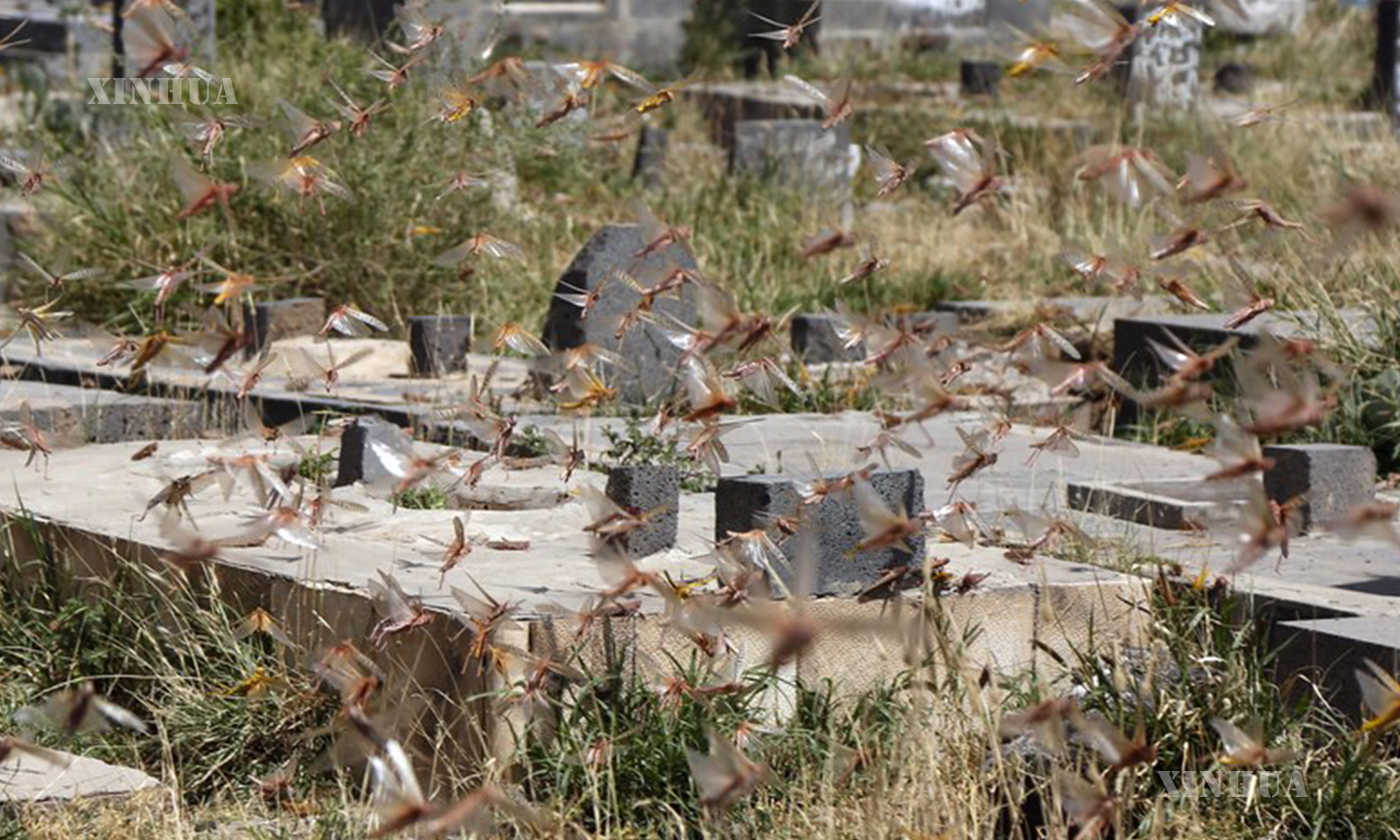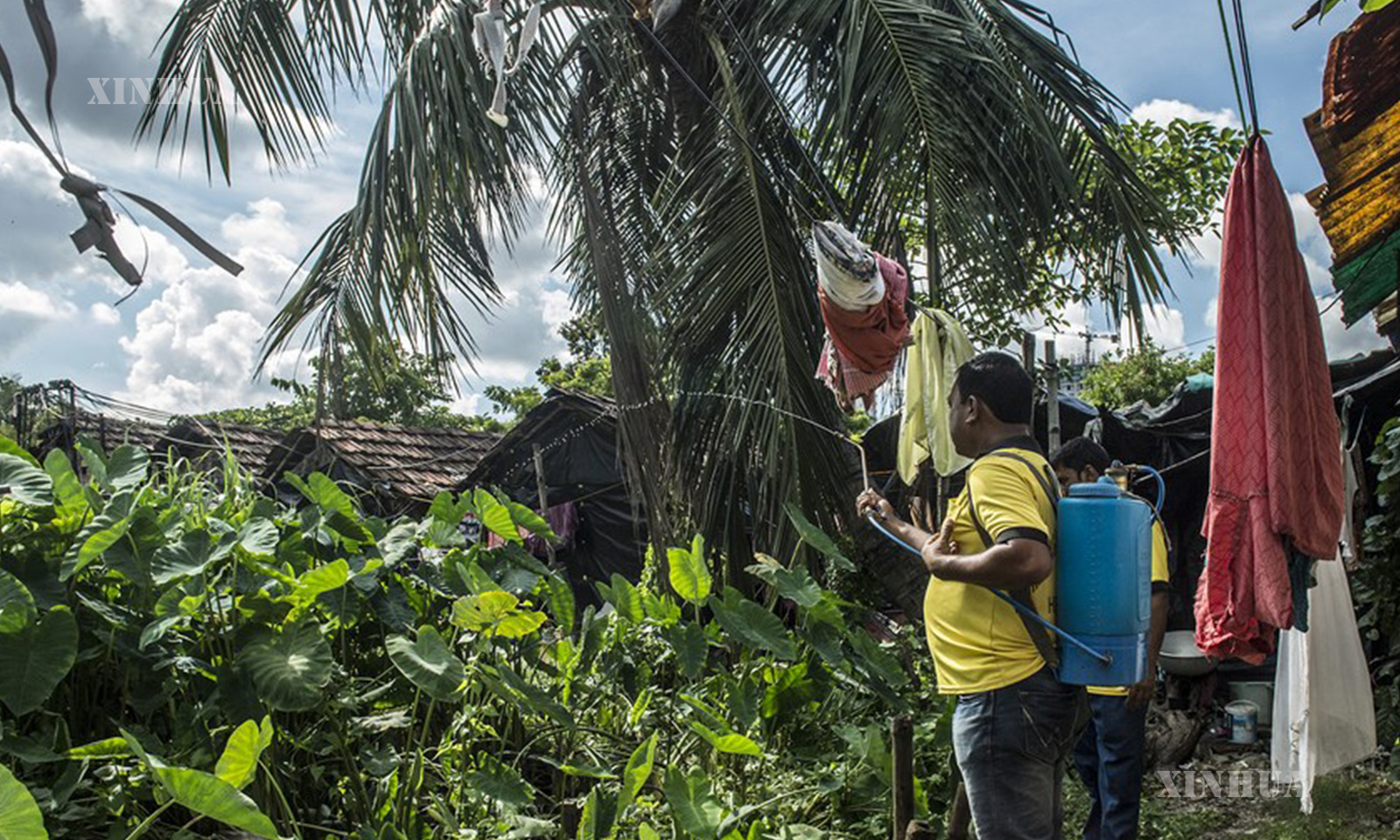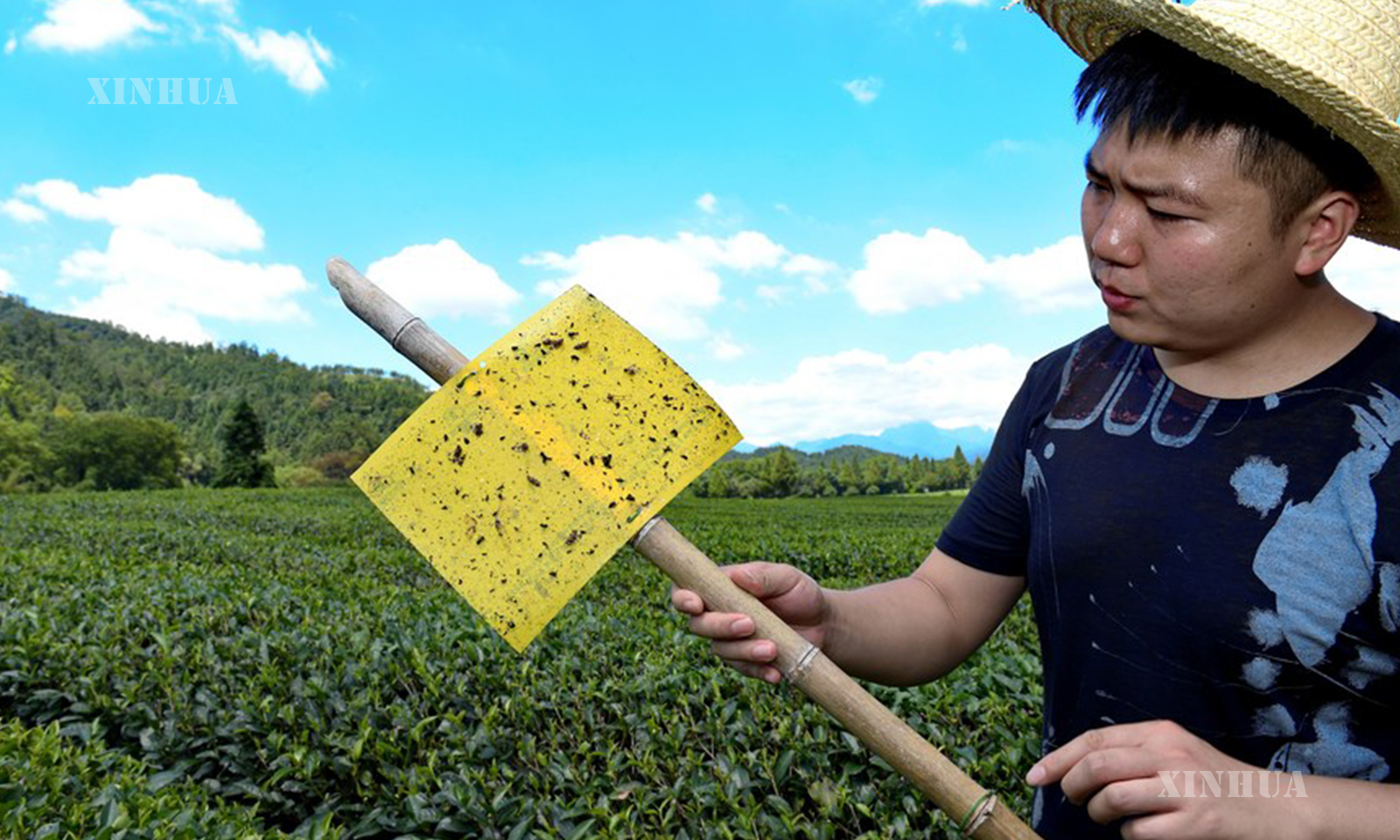International Organizations
သီးနှံဖျက်ပိုးမွှားများက ရာသီဥတုပြောင်းလဲခြင်းအပေါ် သက်ရောက်မှုရှိကြောင်း FAO အစီရင်ခံစာအသစ် မီးမောင်းထိုးပြ

ရောမ၊ ဇွန် ၃ ရက် (ဆင်ဟွာ)
စိုက်ပျိုးရေးစနစ်များအား ဖျက်ဆီးနိုင်သော သီးနှံဖျက်ပိုးမွှားများ၏ သက်ရောက်မှုများက ရာသီဥတုပြောင်းလဲခြင်းကြောင့် ပိုမိုစိုးရိမ်ဖွယ် ဖြစ်လာကြောင်း ရောမမြို့အခြေစိုက် ကုလသမဂ္ဂ (UN) စားနပ်ရိက္ခာနှင့် စိုက်ပျိုးရေးအဖွဲ့ (FAO) က မေ ၂ ရက်တွင် ထုတ်ပြန်သည့် အစီရင်ခံစာအရ သိရသည်။သီးနှံဖျက်ပိုးမွှားများကြောင့် ရာသီဥတုပြောင်းလဲခြင်း သက်ရောက်မှုများအား သိပ္ပံနည်းကျပြန်လည်သုံးသပ်ခြင်း ဟူသော ခေါင်းစဉ်ဖြင့် ထုတ်ပြန်ထားသော စာမျက်နှာ ၈၈ မျက်နှာပါရှိသည့် ဘက်စုံအစီရင်ခံစာတွင် ရာသီဥတုပြောင်းလဲခြင်းကို ကမ္ဘာ့သက်ရှိများ နေထိုင်သောနေရာနှင့် ကမ္ဘာ့လူမှုအသိုက်အဝန်းအား မကြုံစဖူးသော စိန်ခေါ်မှုတစ်ခု အဖြစ် ဖွင့်ဆိုရေးသားထားသည်။ ၎င်းအစီရင်ခံအား University of Turin မှ သုတေသီ Maria Lodovica နှင့် တွဲဖက်ရေးသားသူ ၁၀ ဦးတို့က ရေးသားခဲ့ခြင်းဖြစ်သည်။

ယီမင်နိုင်ငံ ဆန်နားမြို့ရှိ မြေပြင်သို့ ဦးတည်ပျံသန်းလာသည့် ကန္တရကျိုင်းကောင်အုပ်အား တွေ့ရစဉ် (ဆင်ဟွာ)
FAO ၏ အဆိုအရ သီးနှံဖျက်ပိုးမွှားများ၏ ဖျက်ဆီးမှုက စားနပ်ရိက္ခာလုံခြုံရေးနှင့် သဘာဝပတ်ဝန်းကျင်အား ခြိမ်းခြောက်မှုတိုးမြင့်လာကြောင်း ဖော်ပြခဲ့သည်။ သစ်ပင်ပိုးမွှားကျရောက်မှုကြောင့် တစ်နှစ်လျှင် ကာလတန်ဖိုး အမေရိကန်ဒေါ်လာ ၂၂၀ ဘီလီယံကျော် ပျက်စီးလျက်ရှိကြောင်း၊ ပျက်စီးဆုံးရှုံးမှုအနက် အင်းဆက်ပိုးမွှားများကျရောက်မှု တစ်ခုတည်းပင်လျှင် အမေရိကန်ဒေါ်လာ ၇၀ ဘီလီယံထက်မနည်း ရှိခဲ့ကြောင်း FAO က ခန့်မှန်းထားသည်။

ယီမင်နိုင်ငံ ဆန်နားမြို့ရှိ မြေပြင်သို့ ဦးတည်ပျံသန်းလာသည့် ကန္တရကျိုင်းကောင်အုပ်အား တွေ့ရစဉ် (ဆင်ဟွာ)
“ဒီသုံးသပ်ချက်မှာ ရှင်းရှင်းလင်းလင်းဖော်ပြထားတာကတော့ ရာသီဥတုပြောင်းလဲခြင်းရဲ့ အကျိုးသက်ရောက်မှုဟာ သန်စွမ်းတဲ့ အပင်အုပ်စုမှာ ရင်ဆိုင်နေရတဲ့ အကြီးမားဆုံးစိန်ခေါ်မှုတွေအနက် တစ်ခုပဲဖြစ်ပါတယ်” ဟု FAO ညွှန်ကြားရေးမှူးချုပ်လည်းဖြစ်၊ တရုတ်နိုင်ငံ စိုက်ပျိုးရေးနှင့် ကျေးလက်ရေးရာဝန်ကြီးဌာန ဒုတိယဝန်ကြီးဟောင်း Qu Dongyu က ပြောကြားခဲ့သည်။
ယင်းက နှောင့်ယှက်ဖျက်ဆီးတတ်သော အင်းဆက်ပိုးမွှားများအတွက် ဂေဟစနစ်သစ်တွင် ခြေကုပ်ယူရန် သေးငယ်သောပြောင်းလဲမှုများသာလျှင် ဖြစ်ကြောင်း အစီရင်ခံစာက ဆိုသည်။ ရာသီဥတုပြောင်းလဲခြင်းသည် လယ်ယာစိုက်ပျိုးရေးနှင့် သစ်တောဂေဟစနစ် အထူးသဖြင့် ပို၍အေးသော အာတိတ်ဒေသ၊ အေးသောဒေသ၊ အပူအအေးမျှတသောဒေသနှင့် အပူလျော့ဒေသများတွင် ပိုးမွှားများ ပျံ့နှံ့ခြင်းအန္တရာယ် မြင့်တက်လာစေမည်ဟု အစီရင်ခံစာက ခန့်မှန်းထားသည်။
ပုံမှန်မဟုတ် ပူနွေးသော ဆောင်းရာသီတွင်မူ နှောင့်ယှက်ဖျက်ဆီးတတ်သော ပိုးမွှားများ ကျရောက်မှုကို အထောက်အကူဖြစ်စေရန် လုံလောက်နိုင်ကြောင်း အစီရင်ခံစာက မှတ်ချက်ပြုထားသည်။ (Xinhua)
…………………………………………
(English Version)
New FAO report highlights impact of climate change on plant pests
ROME, June 2 (Xinhua) — The impacts of plant pests capable of ravaging agriculture systems are becoming more serious due to climate change, said a report published by the Rome-based United Nations (UN) Food and Agriculture Organization (FAO) on Wednesday.
The comprehensive 88-page report, entitled “Scientific review of the impact of climate change on plant pests,” called climate change “an unprecedented challenge to the world’s biosphere and to the global community.” The report was authored by University of Turin researcher Maria Lodovica and ten co-authors.
According to the FAO, the damage from plant pests poses an “increasing threat to food security and the environment.” The FAO estimated that plant diseases causes damage worth more than 220 billion U.S. dollars per year, with invasive insects alone causing at least 70 billion U.S. dollars in damage.
“The review clearly shows that the impact of climate change is one of the greatest challenges the plant health community is facing,” said FAO Director General Qu Dongyu, who is a former vice minister at the Chinese Ministry of Agriculture and Rural Affairs.
The report said it only takes small changes for invasive insects to gain a foothold in a new ecosystem. It predicted that climate change will increase the risk of pests spreading in agricultural and forestry ecosystems, especially in cooler Arctic, boreal, temperate and subtropical regions.
The report noted that one unusually warm winter can be enough to assist the establishment of invasive pests.
1- A swarm of desert locusts fly toward the ground in Sanaa, Yemen, July 12, 2020. (Photo by Mohammed Mohammed/Xinhua)
2- A staff member from local health department spreads pest-control chemicals to kill mosquitoes and larvae to prevent mosquito-borne diseases in Kolkata, India, on Sept. 2, 2019. (Xinhua/Tumpa Mondal)
3- A staff member from a tea company observes the sticky trap for pests at a tea garden in Wuyishan City, southeast China’s Fujian Province, July 20, 2018. (Xinhua/Zhang Guojun)(gxn) ■
